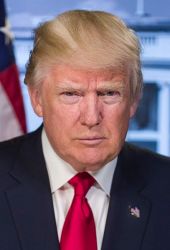Human Wrongs Watch
Voting is the cornerstone of democracy and a fundamental human right recognized under international human rights law and protected by the United States Constitution.
Yet during the 2016 election cycle, American voters faced new and confusing voter ID laws, along with intimidation and voter roll purging, all of which combined to suppress the right to vote in poor and minority communities.
If state legislatures continue to pass restrictive voter identification laws without also making provisions for ensuring that all eligible voters have access to the required types of identification, it is likely that poor and minority communities will continue to be disadvantaged.
In the United States, elections are administered at the local level and are most often regulated by state, not federal, law.
As a result, it is the local election commissions or county elections boards that are the duty bearers and are obligated to respect, protect and fulfill the right to vote—yet these same boards have often been responsible for denying this right.
In fact, widespread fear of voter harassment and intimidation during the 2016 presidential election led organizations like the American Civil Liberties Union (ACLU) to publish information on how to recognize and report such intimidation. Major media outlets such as the New York Times, Washington Post, and USNews & World Report also published similar articles.
Supporters of voter ID laws argue that requiring voters to present photo identification to vote prevents election fraud, while opponents argue that election fraud is very rare in the United States, and that these laws serve only to create barriers that disenfranchise minority voters.
In many countries, requiring a photo ID can be a reasonable condition for voting. However, in the United States, there are significant disparities in who possesses the required identification; analysis by the Brennan Center for Justice shows that the elderly, students, the poor and minorities are less likely to have the identification needed to vote.
These citizens can encounter considerable difficulties in procuring the required identification, such as prohibitive costs, the need to travel long distances, and difficulty accessing government offices with limited business hours in hard to reach locations.
It becomes problematic when voter rolls are purged to disenfranchise a specific group of voters. Establishing accurate voter rolls by removing individuals who are ineligible is an important administrative task, but it becomes problematic when voter rolls are purged to disenfranchise a specific group of voters.
One such case occurred in Sparta, Georgia where the County Board of Elections challenged the registrations of 180 African-American residents based on disparities between addresses on voter registration documents and drivers licenses. Marion Warren, the elections official who raised an alarm with voting rights advocates, said; “A lot of those people that was challenged probably didn’t vote, even though they weren’t proven to be wrong.”
If he is correct, such practices could have a significant impact on voters even when they are unsuccessful.
To understand the effects of these practices we need to look at their scope, beginning by looking at some of the data on voter identification laws. As we can see in the following data from the National Conference of State Legislatures (Figure 1), there has been a steady growth in the number and strictness of voter ID laws over the last fifteen years.
Figure 1: Growth in voter identification laws
These laws are undoubtedly affecting voter turnout. A 2014 study by the Government Accountability Office (GAO) showed that states with voter ID laws saw declines in election turnout in comparison to states that did not have voter ID laws.
The report goes on to say that turnout was disproportionally suppressed among young voters, new voters and among African-Americans. A forthcoming study from the University of California, San Diego compared turnout by various subgroups in every state across the previous five election cycles (2006 to 2014).
Holding all else constant, the authors show that states with strict voter ID laws “reveal substantial drops in turnout for minorities”, as high as 12.5% in some cases.
Advocates and activists across the United States are pushing back by bringing court cases, and working to protect the right to vote through citizen education. Unfortunately, we are likely to see continued erosion of voting rights in the United States under the incoming administration.
For example, a Trump Supreme Court appointee could potentially weaken the Voting Rights Act of 1965 (VRA); based on conservative judges’ attitudes and actions toward the VRA in the past, we can expect that any judge appointed by Trump to the vacant Supreme Court seat will likely not advocate for voter rights, and may in fact hamper them.
In addition, Jeff Sessions, the presumptive attorney general, is an opponent of the VRA and has a history of inflaming fears of voter fraud. During the Regan administration, Sessions was not able to receive confirmation for a federal judgeship due to past racist statements and a record of falsely prosecuting African-American political activists in the name of preventing “voter fraud”.
In comparison to other developed countries, the United States has very low voting rates. We should be encouraging citizens to vote, not making it more difficult.
But under the Trump administration, we are likely to see an increase in actions that suppress minority notes rather than bolster them. Advocates must continue to challenge voter disenfranchisement via the courts and through public education. Most importantly, citizens need to vote, to show that their voices will be heard despite the obstacles put in their way.
To paraphrase Abraham Lincoln’s 1838 Lyceum Address: America will never be destroyed from the outside. If we falter and lose our freedoms, it will be because we destroyed ourselves.
 This article is published under a Creative Commons Attribution-NonCommercial 4.0 International licence.
This article is published under a Creative Commons Attribution-NonCommercial 4.0 International licence.


Leave a comment